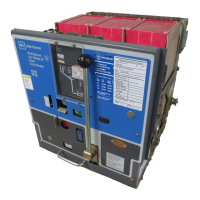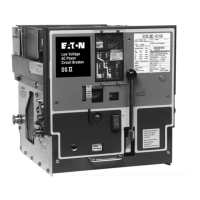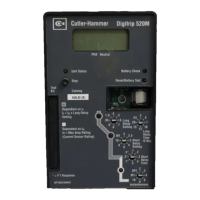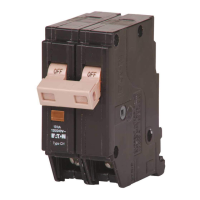1.8. 33-790-11
prevent the oscillator pawl (28) from engaging the next
tooth
in
the ratchet wheel. Thus the oscillator is free and
renders the exact stopping point
of
the motor not critical.
When the spring release latch is moved below the level
of
the stop roller, as later described, the close cam is free
to rotate; and the two closing springs rotate the crank-
shaft counterclockwise to close the breaker contacts.
They assume the position shown
in
Figure 16b and the
cam as
in
22c. During rotation, the drive plates move
away from the ratchet wheel pin. The ratchet wheel does
not rotate during the closing operation thus preventing
excessive wear on the teeth and pawls.
@
1t-~~~~~--'-~--'
©---------'
I
®@®
Page 17
Power-operated breakers are also equipped for emer-
gency hand charging the closing springs. Refer to Figure
21. This operation is similar to that
of
the motor and oscil-
lator except a separate emergency charge pawl (33) is
used to advance the ratchet wheel (17) several teeth
on
each stroke
of
the charge handle (34). This device (26)
also pivots on the crank shaft.
5.1.2.1 Power Operation
The electrical operation
of
the spring-charging motor cir-
cuit is as follows:
The standard basic schematic and connection diagrams
are shown
in
Figure 19a and
b.
Device Y is the anti-pump
relay.
23 22
@
211
®
1.
Shunt
Trip Device
2.
Trip
Shaft
10.
Ratchet
Wheel
11
. Hold Pawl
19. Reset Spring
20. Closing Spring
Anchor
21
. Pole
Shaft
3.
Roller Constraining Link
12.
Drive Plate
4.
Trip
Latch
5.
Close Cam
6.
Stop
Roller
7. Spring Release Latch
8.
Spring Release Device
9.
Oscillator Pawl
13.
Emergency Charge Pawl
14.
Oscillator
15.
Crank
Shaft
16.
Emergency Charge Device
17.
Crank
Arm
18.
Closing Spring
22.
Motor
23.
Emergency Charge Handle
24.
Motor
Crank
and
Handle
25. Moving
Contact
Assembly
26.
Insulating Link
27.
Main Drive
Link
Fig.
14
Arrangement
of
the Principal Parts
of
a Power Operated Mechanism. The Close Spring is Shown
in
the
Charged Position
Effective October 1998
Courtesy of NationalSwitchgear.com

